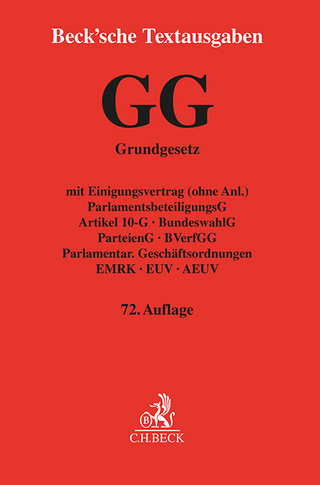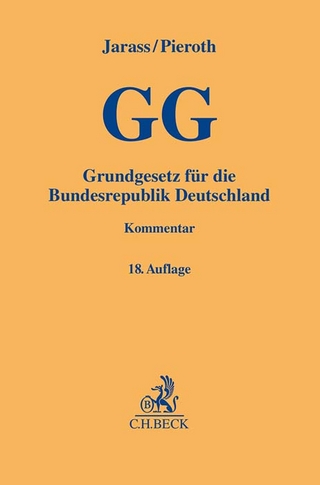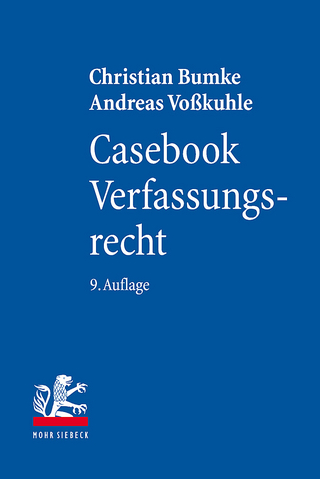
Peacebuilding Paradigms
Cambridge University Press (Verlag)
978-1-108-48372-8 (ISBN)
Peacebuilding Paradigms focuses on how seven paradigms from the Comparative Politics, International Relations, and Policy Analysis subfields - Realism, Liberalism, Constructivism, Cosmopolitanism, Critical Theories, Locality, and Policy - analyze peacebuilding. The contributors explore the arguments of each paradigm, and then compare and contrast them. This book suggests that a hybrid approach that incorporates useful insights from each of these paradigms best explains how and why peacebuilding projects and policies succeed in some cases, fail in others, and provide lessons learned. Rather than merely using a theoretical approach, the authors use case studies to demonstrate why a focus on just one paradigm alone as an explanatory model is insufficient. This collection directly at how peacebuilding theory affects peacebuilding policies, and provides recommendations for best practices for future peacebuilding missions.
Henry F. Carey is Associate Professor of Political Science at Georgia State University. He has published many books and articles on international law, human rights and comparative democratization. Some of his most recent books include Understanding International Law Through Moot Courts and European Institutions (2017); The Challenges of European Governance in the Age of Economic Stagnation, Immigration, and Refugees (2017); and Democratization, and Human Rights Protection in the European Periphery (2014). He received the first Faculty Diversity Award at Georgia State University.
List of figures; List of tables; Acknowledgments; Foreword George Lopez; Introduction: bridging the conceptual and theoretical divides on peace and peacebuilding Henry F. Carey and Onur Sen; Part I. The Realist Paradigm: 1. Strategies for peace Michael Fowler; 2. Realism, rationalism, and peace: a top-down and a staged perspective Norrin M. Ripsman; 3. Building peace through social relationships: a primatological perspective Sarah F. Brosnan; Part II. The Liberal Paradigm: 4. Liberal peacebuilding: bringing domestic politics back in Louis-Alexandre Berg; 5. Conflict prevention and management I. William Zartman; Part III. The Constructivist Paradigm: 6. The social construction of peacebuilding Brandon Howe; 7. Generations of constructing peace: the constructivism paradigm and peacebuilding Erin McCandless and Timothy Donais; Part IV. The Cosmopolitan Paradigm: 8. A pluralist cosmopolitanism for the 21st century Richard A. Falk; 9. The international law of peace Henry F. Carey and Rebecca Sims; 10. Islamic Gnosticism and peace: a paradigmatic shift in pursuit of peace Farid Mirbagheri; Part V. The Critical Theory Paradigm: 11. Critical approaches to peacebuilding Jacob Mundy; 12. A new paradigm: engendered-sustainable peace and security Úrsula Oswald Spring and Stacey M. Mitchell; 13. From Scylla to Charybdis? The risks and opportunities of digital peacebuilding Oliver P. Richmond and Ioannis Tellidis; Part VI: The Locality Paradigm: 14. Envisioning peace/transforming conflict: a global approach to peace Sabine Kurtenbach; 15. Paradigm partners for locally grounded peacebuilding John Hoven; 16. Cultural peacebuilding Aigul Kulnazarova; Part VII. The Policy Paradigm: 17. Peacebuilding paradigm from the perspective of policy approach: its outline through comparison Chigumi Kawaguchi and Josuke Ikeda; 18. A bottom-up view at peacebuilding: pragmatism, public opinion and the individual as unit of analysis in post-conflict societies Ridvan Peshkopia; 19. Conclusion: a hybrid approach to understanding peacebuilding Henry F. Carey and Stacey M. Mitchell; Bibliography; Index.
| Erscheinungsdatum | 15.01.2021 |
|---|---|
| Zusatzinfo | Worked examples or Exercises |
| Verlagsort | Cambridge |
| Sprache | englisch |
| Maße | 160 x 235 mm |
| Gewicht | 760 g |
| Themenwelt | Recht / Steuern ► EU / Internationales Recht |
| Recht / Steuern ► Öffentliches Recht ► Verfassungsrecht | |
| Recht / Steuern ► Öffentliches Recht ► Völkerrecht | |
| Sozialwissenschaften ► Politik / Verwaltung ► Europäische / Internationale Politik | |
| ISBN-10 | 1-108-48372-0 / 1108483720 |
| ISBN-13 | 978-1-108-48372-8 / 9781108483728 |
| Zustand | Neuware |
| Haben Sie eine Frage zum Produkt? |
aus dem Bereich


